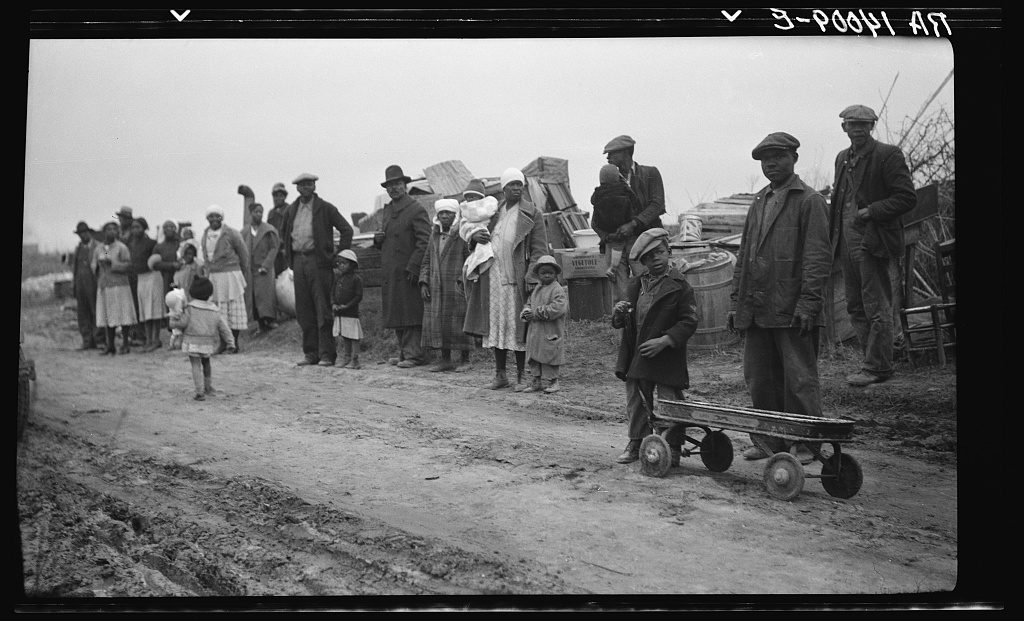Parkin (vicinity), Arkansas. The families of evicted sharecroppers of the Dibble plantation.

A group of African American families stand beside a dirt road near Parkin with their belongings after being evicted from the Dibble Plantation in January 1936.
Excerpts
Parkin (vicinity), Arkansas. The families of evicted sharecroppers of the Dibble plantation. They were legally evicted the week of January 12, 1936, the plantation having charged that by membership in the Southern Tenant Farmers’ Union they were engaging in a conspiracy to retain their homes; this contention granted by the court, the eviction, though at the point of a gun, was quite legal. The pictures were taken just after the evictions before they were moved into the tent colony they later enjoyed
Questions:
These people have been evicted from their homes.
How would it feel to lose your home?
The caption states that they are sharecroppers. What is a sharecropper?
How will their occupation help or hurt them in seeking new employment in January?